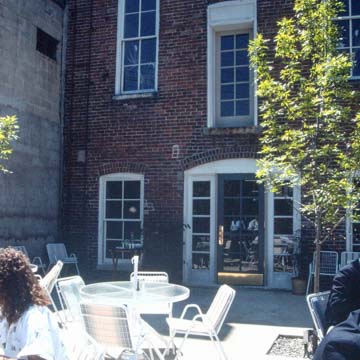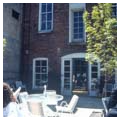You are here
Front Street Commercial District and Riverwalk (River Raisin Esplanade)
Most of the buildings here are three-story brick Italianate storefronts with round-arched windows, hood molding, and corbeled cornices. Of special note are the commercial buildings at 82 W. Front Street, The August and Clark Building (12–14 W. Front Street), and Haeger's (33 W. Front Street), built in the 1870s. The Monroe Bank and Trust Building (102 E. Front Street), the Reaper Building (123–125 E. Front Street), and the River Raisin Centre for the Arts, formerly the Monroe Theater (114 S. Monroe Street), are notable early- to mid-twentieth-century buildings. The former Greening Nursery Office Building (1928) is at 206 S. Monroe Street. To promote cultural and economic growth in downtown Monroe, Main Street Monroe and the Downtown Development Authority support projects with professional expertise and facade grants in aid. Riverwalk follows the River Raisin below the Macomb street and Monroe street bridges.
Writing Credits
If SAH Archipedia has been useful to you, please consider supporting it.
SAH Archipedia tells the story of the United States through its buildings, landscapes, and cities. This freely available resource empowers the public with authoritative knowledge that deepens their understanding and appreciation of the built environment. But the Society of Architectural Historians, which created SAH Archipedia with University of Virginia Press, needs your support to maintain the high-caliber research, writing, photography, cartography, editing, design, and programming that make SAH Archipedia a trusted online resource available to all who value the history of place, heritage tourism, and learning.


















